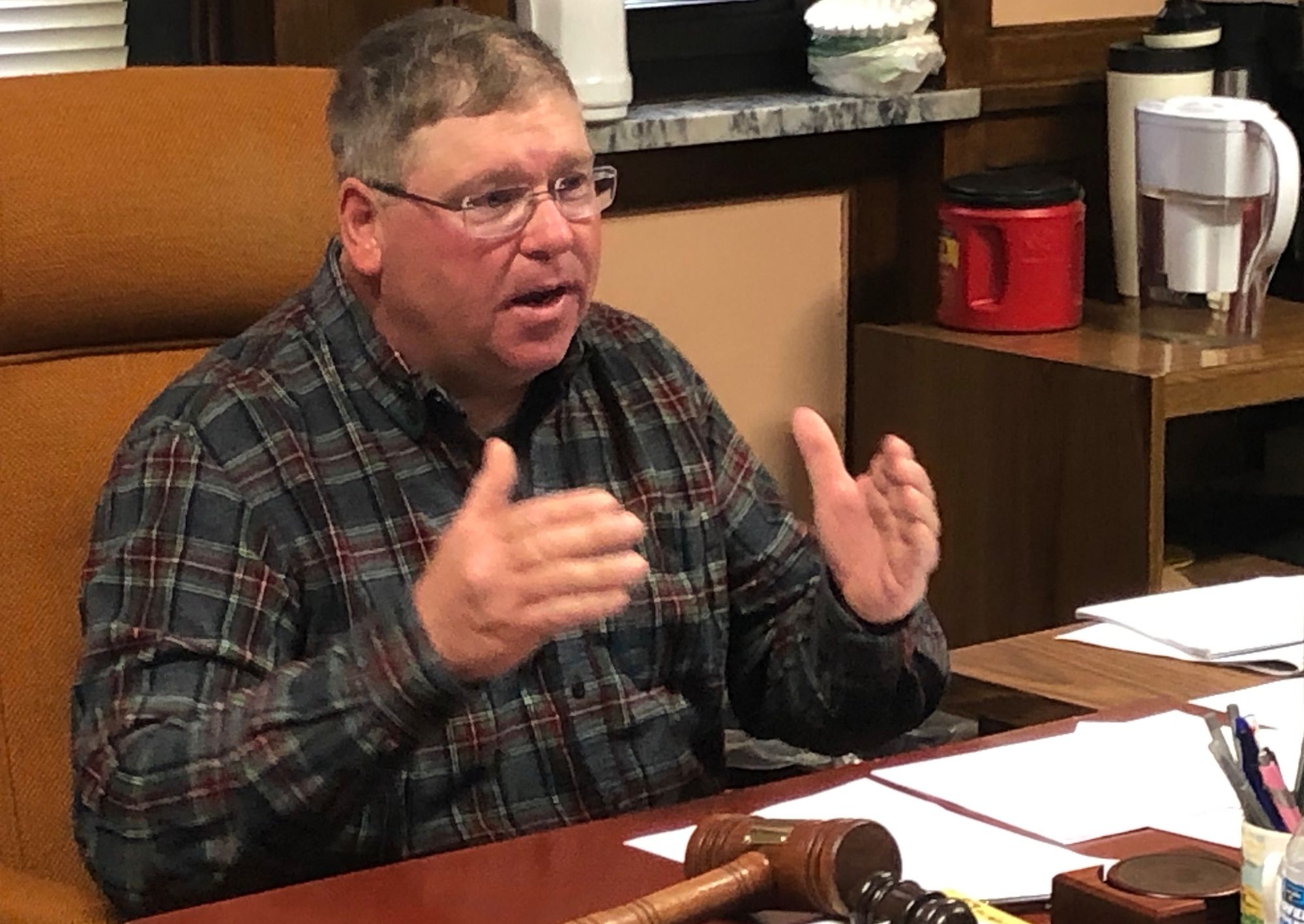The state of South Dakota entered the fray over siting of new large livestock operations in the state when it created an economic development initiative in early 2019 that can provide large payments to counties that approve new concentrated animal-feeding operations.
The program, which has not yet distributed any funds, was immediately criticized by opponents of CAFOs as a form of “bribery” and a heavy-handed intrusion by the state into a land-use system historically based on local control.
Since 2013, South Dakota has operated a tax-rebate program to encourage business development in the state. The Building South Dakota program gives companies that build new or expanded operations a rebate of some of the state sales and use taxes they pay to get up and running.
The goal is to put the state on more equal footing with neighboring states—which do not typically tax sales of construction equipment—when it comes to luring new industry to create jobs and new tax revenues in South Dakota, said Joe Fiala, community development director for the Governor’s Office of Economic Development.
The companies can use the rebate money in any way they see fit, including giving it to a third party of their choice, Fiala said.
In spring 2019, after discussion with interested lawmakers, county economic development officials and representatives of the agricultural industry, and with support from Gov. Kristi Noem, the GOED added new livestock operations to the list of targeted industries that qualified for the tax rebates, Fiala said.
But — in a rule specific to livestock projects — the GOED requires that the tax rebates offered to developers of livestock operations be given to the county governments where new CAFOs are approved.

“From an economic development standpoint, generally these types of projects, livestock-development projects, enhance our tax base because they’re putting up buildings and paying property taxes,” Fiala said. “And they’re also providing new jobs for the state, and in general they’re paying a good wage and offering good benefits.”
Fiala said the program encourages development of livestock operations, which he called “one of the few rays of sunshine in the ag economy.” But, he said, it also can provide counties that support new CAFO projects a much-needed financial boost at a time when many rural counties have rising expenses but tax revenues that aren’t keeping up.
Some critics of the program have called the rebates a “bribe” by the state to push counties to approve CAFOs that may be opposed by residents, project neighbors and some county commissioners. They also say it violates the long-held South Dakota system that allows mostly for local control over local projects.
Kathy Tyler, a former lawmaker who lives near a hog CAFO in Grant County, said the financial incentive unfairly pressures counties to approve livestock developments.
“It’s bribery, pure and simple,” said Tyler, an outspoken critic of CAFOs. “If I went to a zoning meeting and offered them $400,000 to not permit a facility, I would be put in jail for bribery.”

Tyler said it is important to note that the tax-rebate money given to counties will come from the developer and not the state, which technically operates only as a go-between.
The program essentially means that developers will be paying counties to approve their projects, she said. “It’s the entity that is giving them the money, and that’s why it’s bribery,” she said.
CAFOs may provide an economic boost to regions where meat-processing plants or dairies are located nearby, but they add little to local economies when sited in rural regions far from processors, Tyler said.
“As for economic development, I am hard pressed to see how a facility like that improves the economy of any community,” said Tyler, who served in the state House of Representatives as a Democrat in 2013-14. “But when you bring a facility into a county that doesn’t have usage of that product, hogs or milk or whatever, all the money is going out of state.”
Fiala rejects the notion that the state is pressuring counties to approve new projects.
“Local control is still important, and we are not trying to be in the middle of that,” he said. “If a county does not see livestock development as a fit for their county, they don’t have to be involved.”
So far, four projects have been tentatively approved for payments under the program, including two sow barns, according to records from the GOED:
— Ag Processing Inc., Aberdeen, Brown County, approved in June for $306,000 for soybean processing plant that will create 10 jobs at an average wage of $26.31 an hour. Annual property taxes estimate at $391,000.
— Redstone Farms RE LLC, Clark County, approved in August for payment of $477,585 for development of a sow barn that will created 19 jobs at an average wage of $32 an hour. Annual property taxes estimated at $45,000.
— Ratio, LLC, Hand County, approved in August for payment of $477,585 for development of a sow barn that will created 19 jobs at an average wage of $32 an hour. Annual property taxes estimated at $45,000.
— Turner County Dairy, Minnehaha County, approved in October for payment of $756,000 for a dairying operation that will 25 jobs at an average wage of $20 an hour. Annual property taxes estimated at $80,000.

The Hand County hog farm is proposed for a site about 10 miles southeast of Miller (the project received county approval in August). The approved payment of $477,585 would equate to about one-quarter of Hand County’s annual general-fund spending.
As proposed by the Pipestone System of Minnesota, the CAFO would produce 145,000 piglets a year, valued at an estimated $5.6 million. The firm said the project would create the equivalent of 19 full-time positions with a $1.27 million annual payroll and require purchase of about $1.3 million in feed annually.
The project faced significant opposition from some property neighbors and also from the U.S. Fish & Wildlife Service, which expressed concerns that the CAFO is only 750 feet from the Cahalan Waterfowl Production area and that manure is proposed to be spread on lands surrounding the wildlife area.
During a well-attended meeting where the hog CAFO was discussed and eventually approved, Hand County commissioners discussed the project in depth and raised several concerns about location, manure management, truck traffic and water use. However, the potential economic windfall from approving the project never came up at the meeting.
In an interview before the vote, Commissioner James “JD” Wangsness said the possible financial incentive was not a driving force in the county’s consideration of the hog CAFO.
“It’s another piece of the puzzle and it is a big deal as far as the tax potential and the economic growth because it’s a big facility and we just don’t get those,” Wangsness said. “It’s a pretty cool benefit but it’s not impacting my feeling on this project. It’s just a big elephant in the room that we have to walk around because now everyone is accusing us of being bought and that’s just not true.”
Wangsness, who was recently appointed by Gov. Noem to fill an open House seat in the state Legislature, said the county likely would use the tax-rebate money to improve roads and bridges in Hand County.
In an interview with News Watch, Gov. Noem defended creation of the tax rebates, saying it made sense to add livestock production to the existing incentive program.
“What we’re doing is using an existing program in a way that will help a lot of those projects get support and be something that is a tool that has always been in place and use it in a new way,” Noem said.
She also said the program does not diminish local control over siting and approval of CAFO projects.
“Nothing in this program would change the decisions that county commissioners would have; it’s still a local decision, we keep it that way,” Noem said. “All we do is attract valued-added ag processing by allowing the county to have an opportunity to participate as well.”
The state has aided counties in siting CAFOs in the past. In 2013, the state Department of Agriculture launched a program that gave counties advice on where CAFOs might be located.
The County Site Analysis Program, led by the First District Association of Local Governments, used mapping software and zoning rules to present a report to counties showing where new agricultural development would be suitable, including specific references to CAFO developments.
A report created for Clark County, in the northeast quadrant of the state, revealed 25 sites that were deemed suitable for CAFO developments. The report also provided data and analysis that might help county officials rebuke opposition to any proposed CAFOs.
“The program assists participating counties in identifying potential rural properties with site development opportunities,” the report said. “It also helps identify and plan for potential challenges that may arise should those opportunities be pursued.”



